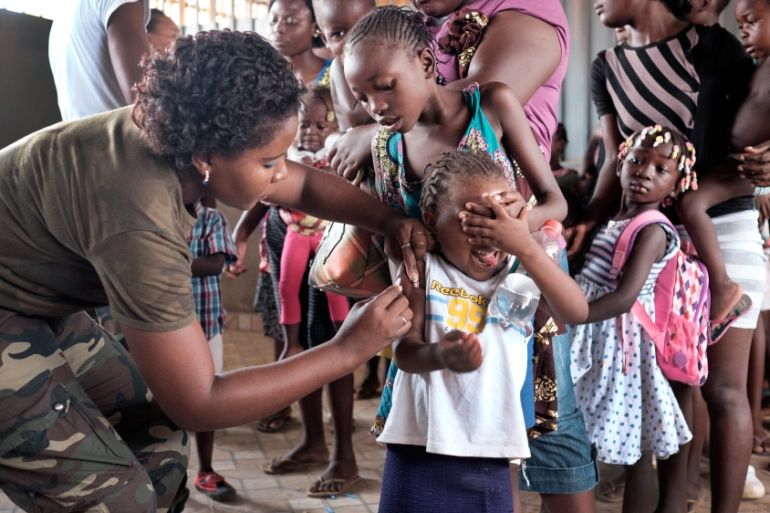More than 150 killed in Angola yellow fever outbreak
At least 158 killed, with over 50 deaths reported last month, WHO says as it warns the viral disease is spreading fast.

A yellow fever epidemic has killed 158 people in Angola, with more than 50 deaths occurring last month alone, the World Health Organization officials have said.
A WHO representative in the capital, Luanda, said on Friday that the “possibility of spreading to other provinces” was much higher and deaths due to the viral disease transmitted by mosquitoes has been accelerating.
Keep reading
list of 4 itemsTurtles swimming to extinction in Malaysia as male hatchlings feel heat
Could shipping containers be the answer to Ghana’s housing crisis?
Thousands protest against over-tourism in Spain’s Canary Islands
“The possibility of spreading out to other provinces or even to the all country is much higher than if it had happened in a rural area,” Hernando Agudelo Ospina said.
“This is an urban pattern of outbreak of Yellow Fever and it is much more complicated to tackle and deal with.”
| Yellow Fever facts |
Source: WHO
|
Angola lies in the yellow fever belt of Africa where 90 percent of about 60,000 annual global deaths occur due to the disease, according to WHO data. An estimated 84,000-170,000 severe cases of yellow fever occur in Africa.
There is no specific treatment for the viral haemorrhagic disease which is transmitted by infected mosquitoes and found in tropical regions of Africa and Latin America’s Amazon region. Vaccination is the best preventive measure against the disease.
Poor sanitation has been the main cause of the outbreak as it provides a fertile breeding ground for mosquitoes.
Piles of waste
City authorities have slashed their budget for rubbish collection to cope with a budget crisis, leaving piles of waste building up in poorer suburbs including Viana, where the first case of yellow fever was reported in late December.
Yellow fever symptoms include severe headache, nausea, vomiting and fatigue, according to WHO.
The disease can enter a toxic phase in some people, leading to organ failure and death.
Angola relies on crude exports for around 95 percent of its foreign exchange earnings and a sharp decline in oil prices since mid-2014 has hobbled Africa’s second biggest oil exporter, sending the kwanza currency plummeting, and necessitated deep cuts in public spending.
There has also been an increase in malaria, cholera and chronic diarrhoea in Luanda and other cities, partly due to a breakdown in sanitation services and rubbish collection, health officials say.